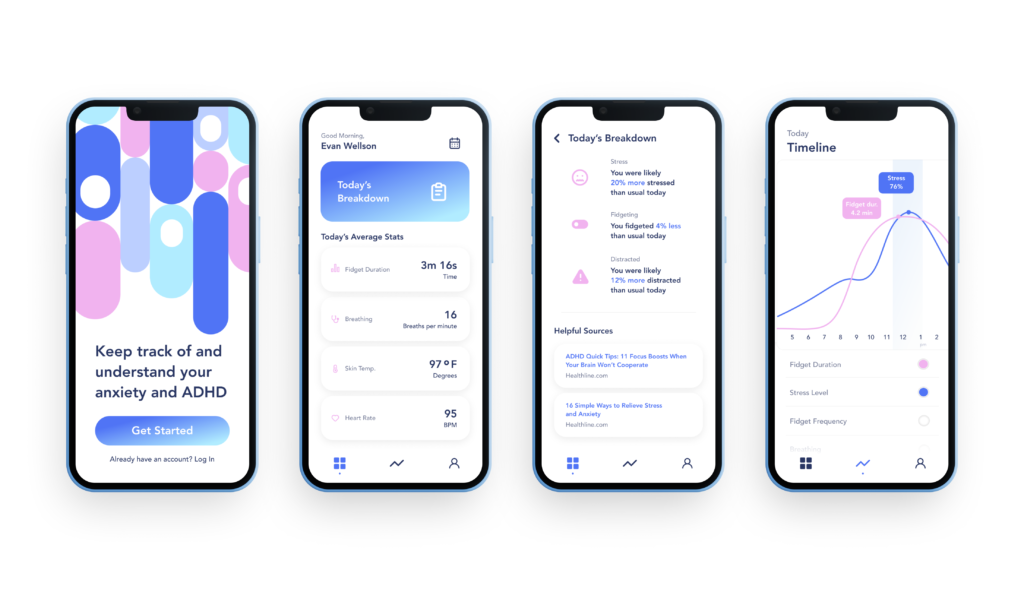Course: DES INV 190-1 / ME 292C, Human Centered Design Methods
Team: Vivianne Champagne, Amanda Yang, Justin Oshiro, Prathamesh Sahastrabudhe
Often used as a passive device, team Embrace began their project curious to learn if fidget toys could benefit from a more data-driven approach. Asking, “could a fidget toy be used to collect user data and biofeedback statistics, in order to provide those facing conditions such as ADHD, anxiety, or OCD (a group who often fidgets at a higher rate than most) with a better understanding of themselves?”
By combining the markets for personal health data collection and fidget toys, Embrace allows these groups to feel more in control of their conditions and provide greater depth to moments where they are fidgeting and more likely to be feeling heightened amounts of anxiety, stress, distraction, boredom etc.
Through 4 phases (identify, understand, conceptualize, realize), the team focused on creating Embrace—a bracelet that you can fidget with while wearing. The bracelet takes in biofeedback data at all times, and includes three tactical push buttons and two sliders to fidget with. The team imagines the end product will be made from a soft touch plastic, such as silicone, and can be worn for long durations of time without discomfort. The biofeedback from the user’s interaction with the bracelet is then sent to an app, where the user can view their fidgeting duration and frequency in comparison to stress levels, heart rate, breathing rate, and skin temperature. Analyzing these data sets side-by-side can help the user better understand the correlation between body symptoms related to anxiety, ADHD, OCD, and fidgeting—helping the wearer build a better understanding of their own patterns, trigger sources, and ultimately, of themselves.


